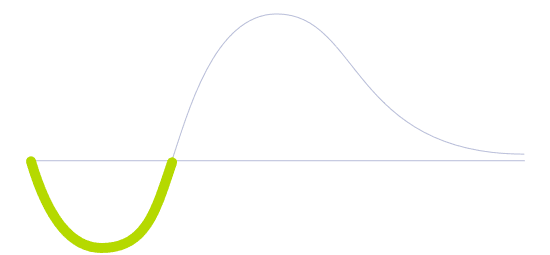Artificial General Intelligence

Technology Life Cycle
Initial phase where new technologies are conceptualized and developed. During this stage, technical viability is explored and initial prototypes may be created.

Technology Readiness Level (TRL)
Research is scrutinized and correlations to practical applications are applied to initial scientific observations. No experimental proof of concept is available yet.

Technology Diffusion
First to adopt new technologies. They are willing to take risks and are crucial to the initial testing and development of new applications.

Efforts worldwide are being made to implement cross-domain capabilities in an artificial agent. That would include natural language communication, social skills, creativity, general wisdom and knowledge of all possible domains.
An artificially intelligent system that could perform intellectual and cognitive tasks with similar capabilities to human beings and possibly similar general levels of perfection. A sophisticated technology with cross-domain abilities, capable of improving its own architecture by using self-healing softwares. Together with instant access to big data, it could be very useful in working out complex unresolved problems including optimal energy usage in industries and new material development.
If this highly complex agent were to be built inside a humanoid carcass, it would result in a multi-purpose robot; an android capable of assisting a household or an industry in a variety of ways. In combination with a network of sensors that gather enough information for a broader vision of the scenario, the advanced processing ability of this AI system could still provide insight in line with ethical and moral parameters just like humans. It would have basically been made for our world by combining its cross-domain problem-solving mind with the practicality of having a human-like body.
In this sense, this technology could be an important feature for decision-making software to help humans in fields such as the financial market, healthcare, agriculture, legislation and governmental affairs. Judges have been using AI to determine future criminals; the results showed that the algorithms were likely to point to certain minorities rather than others, showing human-based bias in its decisions, while unable to see the big picture and cross-check data to determine why those minorities were in a socioeconomic situation of vulnerability.
This type of machine would have no reason to stop at human-level intelligence and would continue learning, reaching what is being called superintelligence. At this point, it would be particularly important to ensure that this highly intelligent agent is safe for humanity, especially by sharing current moral values while not reproducing our societal or personal biases.
Future Perspectives
With the development of this technology and the complexity of AI processing, it is expected that costs could be reduced as long as the technology continues to spread into more segments of society, rather than peaking as just another helpful tool for decision-making in major corporations.
By going beyond its function as a super intelligent consultant to take part in daily routines, it is decisive to highlight that based on the future ceiling for artificial intelligence, the old-fashioned notion that machines are not able to feel emotions or act skeptical while making decisions free of natural human bias, is fading fast.
One of the biggest challenges is that the combination these types of systems with IoT systems (from our houses to our vehicles and cities) and additional sensors embedded into living bodies or places, calls into question whether or not it makes sense to take important decisions out of human control. As machine learning becomes more sophisticated, it is expected that engineers will lose themselves at some point while trying to explain the choices and decisions made by an AI system because algorithms are designed to grow and evolve accordingly, just as humans are prewired to learn based on the stimuli in their environment.
Image generated by Envisioning using Midjourney